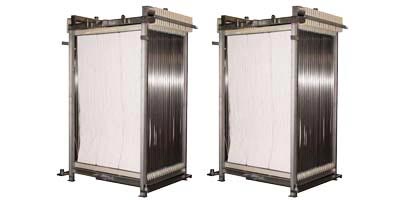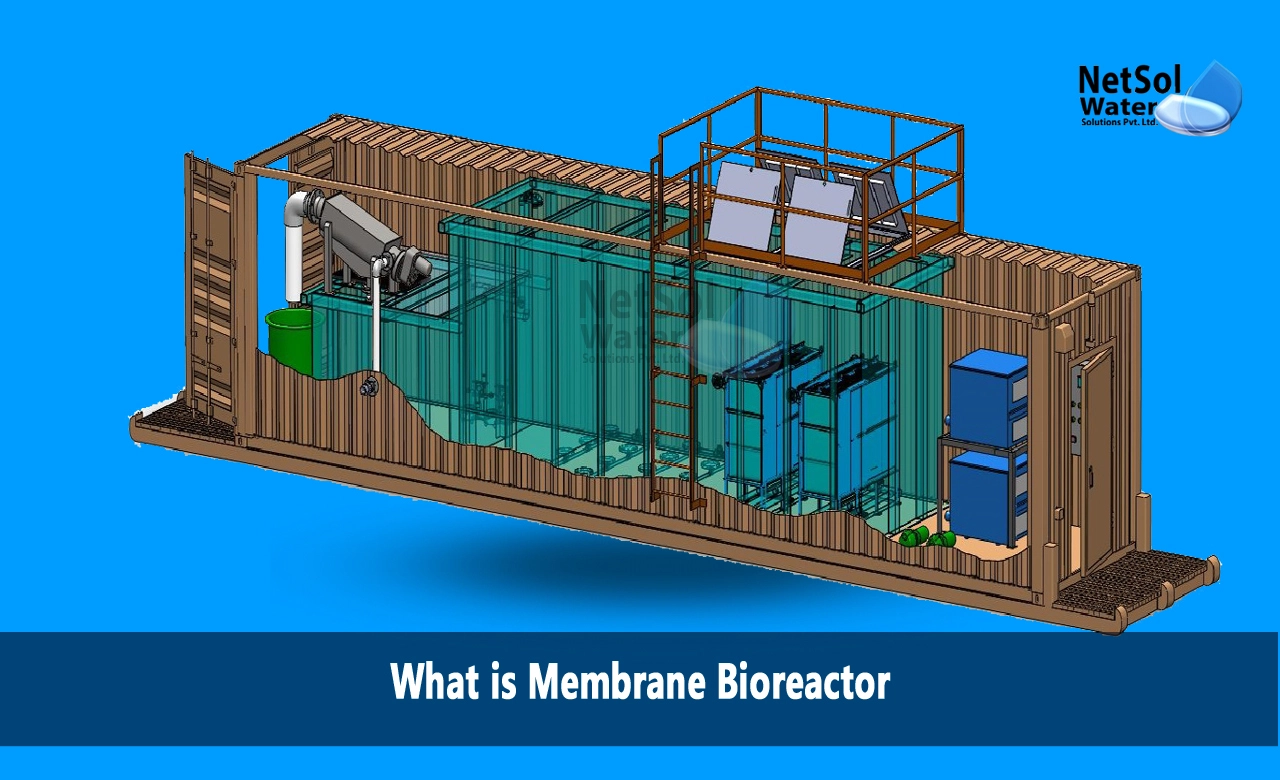The Science Behind Membrane Bioreactor: How It Works and Why It’s Effective
The Science Behind Membrane Bioreactor: How It Works and Why It’s Effective
Blog Article
The Benefits of Membrane Bioreactors in Sustainable Wastewater Administration
Membrane bioreactors (MBRs) stand for an essential development in sustainable wastewater monitoring, effectively combining biological therapy with innovative membrane layer filtering technology. This assimilation not just enhances effluent quality by effectively removing contaminants but additionally opens avenues for water reuse in numerous applications, therefore dealing with journalism requirement for source preservation. Moreover, the compact style of MBRs contributes to substantial reductions in ecological influence and functional expenses. As the demand for sustainable services magnifies, checking out the diverse benefits of MBRs might expose unanticipated ramifications for the future of wastewater treatment systems.
Overview of Membrane Layer Bioreactors
Membrane bioreactors (MBRs) represent a considerable advancement in wastewater therapy modern technology, integrating biological destruction with membrane filtering to boost the effectiveness of the therapy process. This innovative system incorporates the advantages of standard activated sludge processes with membrane layer innovation, enabling enhanced solid-liquid splitting up. MBRs make use of semi-permeable membrane layers to separate treated water from biomass, causing high-grade effluent that can be reused or safely discharged right into the atmosphere.
The functional design of MBRs typically entails a bioreactor where microbes damage down raw material, complied with by a membrane unit that filters the blended liquor. This setup not just lessens the impact of the treatment facility yet additionally enables higher biomass focus and minimized hydraulic retention times. Furthermore, MBRs are qualified of treating a broader variety of contaminants, consisting of nutrients and microorganisms, making them appropriate for numerous applications, from metropolitan wastewater therapy to industrial effluent handling.
The assimilation of MBRs right into wastewater monitoring systems is a measure of an expanding fad towards lasting and reliable methods in environmental engineering. Their ability to generate top notch effluent while minimizing area demands settings MBR technology as an essential gamer in modern wastewater therapy solutions.
Improved Effluent Top Quality

The membrane layer filtering procedure functions as a physical barrier, allowing the retention of microorganisms and particle issue, which adds to a more clear and cleaner effluent (Membrane Bioreactor). MBRs operate at higher biomass concentrations than standard triggered sludge systems, promoting extra reliable biodegradation of contaminants. This causes a reduction in biochemical oxygen need (BOD) and complete put on hold solids (TSS) degrees in the last effluent
Additionally, MBRs show excellent efficiency in treating tough wastewater structures, such as industrial effluents and wastewater with high nutrient tons. Because of this, the effluent created is often of better, enabling more adaptable disposal options and decreased environmental effect. Ultimately, the enhanced effluent quality achieved with MBR innovation highlights its vital function ahead of time sustainable wastewater administration techniques.
Water Reuse Opportunities
The premium effluent created by membrane bioreactors (MBRs) opens substantial chances for water reuse in various browse around this web-site applications. MBRs efficiently remove contaminants, including pathogens, suspended solids, and raw material, resulting in treated water that meets or goes beyond regulative criteria for reuse. This high quality enables the application of water reusing campaigns throughout diverse markets.
One famous application is in agriculture, where dealt with wastewater can be used for watering, advertising lasting farming practices while conserving fresh water resources. Furthermore, MBR-treated effluent can be utilized for industrial processes such as cooling, cleaning, and as a process water resource, considerably minimizing the demand for drinkable water in these procedures.
In urban environments, MBRs facilitate using reclaimed water for landscape irrigation, bathroom flushing, and other non-potable uses, adding to the have a peek at this site total resilience of supply of water systems. The assimilation of MBR modern technology in decentralized systems aids in taking care of local water needs, particularly in water-scarce areas.
Lowered Environmental Effect
How can the fostering of membrane bioreactors (MBRs) contribute to a reduced environmental impact in wastewater management? MBRs substantially enhance the therapy performance of wastewater while minimizing eco-friendly disruptions. Membrane Bioreactor.
In addition, MBRs operate at lower hydraulic retention times contrasted to traditional systems, leading to smaller therapy plant footprints. This portable design reduces land use, therefore preserving all-natural habitats and biodiversity. The process additionally produces much less sludge than standard methods, minimizing disposal challenges and decreasing greenhouse gas discharges related to sludge monitoring.
In addition, MBRs assist in the recuperation of valuable sources, such as water and nutrients, contributing to a round economy. By enabling water reuse for irrigation or industrial processes, MBRs help relieve freshwater deficiency, hence promoting lasting water make use of practices. Ultimately, the adoption of MBR technology represents a significant stride in the direction of decreasing the ecological effect of wastewater administration systems.
Financial Benefits of MBRs

In addition, MBRs help with the production of high-quality effluent, which can be reused for numerous applications, such as agricultural irrigation and industrial procedures - Membrane Bioreactor. This reuse capacity can substantially lower water purchase prices, supplying a financial motivation Discover More Here for markets facing stringent water guidelines
The portable layout of MBR systems additionally leads to reduced land demands, which is specifically valuable in metropolitan locations where genuine estate is expensive. By lessening area, sectors and communities can save money on land acquisition and maintenance expenses.
In addition, MBRs frequently need less regular upkeep and have a longer life-span than traditional systems, better contributing to set you back savings. In summary, the economic advantages of MBRs-- varying from reduced operational costs to land cost savings and effluent reuse-- make them a compelling selection for sustainable wastewater management, using both lasting and prompt monetary advantages.
Conclusion
Membrane bioreactors stand for a transformative strategy to sustainable wastewater administration, combining biological therapy with innovative membrane layer purification for remarkable effluent top quality. Their capacity for effective impurity elimination assists in water reuse, thus conserving essential freshwater sources. Furthermore, MBRs add to minimized environmental impacts with compact layouts and lower sludge generation. Economic advantages even more enhance their feasibility, making MBRs a promising service for resolving the challenges of wastewater treatment and promoting sustainable resource administration.
Membrane layer bioreactors (MBRs) stand for a critical advancement in lasting wastewater management, properly combining biological therapy with sophisticated membrane purification innovation.Membrane bioreactors (MBRs) represent a considerable improvement in wastewater treatment technology, incorporating organic deterioration with membrane purification to improve the effectiveness of the therapy process.Attaining improved effluent quality is one of the most significant benefits of using membrane layer bioreactors (MBRs) in wastewater treatment.Additionally, MBRs show exceptional performance in treating challenging wastewater make-ups, such as commercial effluents and wastewater with high nutrient tons.Integrating membrane bioreactors (MBRs) into wastewater administration not only minimizes ecological influence but also presents substantial financial advantages.
Report this page